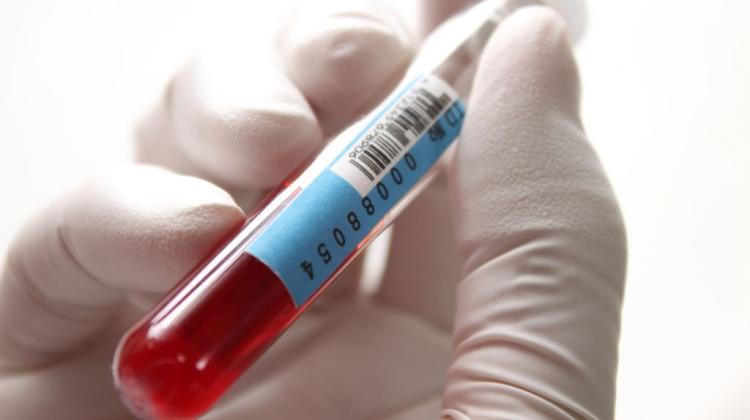Experts: The more we lower cholesterol, the better

Statins prolong life and should be used at maximum doses, because the more we reduce the level of cholesterol in the blood, the better - Prof. Marlena Broncel from the Medical University of Lodz said at the press breakfast in Warsaw.
The expert spoke about the latest international guidelines on the treatment of lipid disorders (excessive levels of so-called bad LDL cholesterol and triglycerides and low levels of "good" HDL cholesterol). She said that the requirement had been abandoned that lipid profile (the study of the level of individual lipids) should performed on fasting (8-12 hours after the last meal).
European Atherosclerotic Society (EAS) and the European Society of Cardiology (ESC) in 2016 recognized lowering LDL as the most important, as too much cholesterol in the blood results in the largest increase of the risk of cardiovascular disease. Raising HDL at any price is not the main therapeutic target.
Statins have been used for over 30 years to lower LDL cholesterol levels. "Let us end the myths about these drugs being dangerous, because it is not true, they are safe to use in the vast majority of people. Lowering bad cholesterol by 40 md/dl reduces the risk of death from heart attack and stroke, as well as the heart attack not ending in death by 20-25 percent" - stressed Prof. Marlena Broncel of the Department of Internal Medicine and Clinical Pharmacology, Medical University of Lodz.
Medical Director of Synevo Laboratories Andrzej Marszałek pointed out that there are no uniform standards of recommended lipid levels for all patients. The patient\'s overall condition is the decisive factor. Different standards apply to people after a heart attack, with diabetes or hypertension.
"We should discontinue including the reference values on the lipid profile results. There should be only alarming results, such as elevated levels of total cholesterol (above 190 mg/dL), LDL (above 155 md/dL) and triglycerides (over 880 mg/dl)" - stressed Prof. Broncel.
According to the expert, the need to lower LDL levels is the strongest in patients after myocardial infarction and stroke. In these patients, it should not exceed 70 mg/dl. Low bad cholesterol (below 70 mg/dl) should also occur in patients with diabetes (type 1 and 2), in which there are complications of the disease, such as cardiovascular disease.
"If the patient does not have diabetes, doctor should check the condition of kidneys by determining the renal glomerular filtration (GFR)" - explained Prof. Broncel. When the GFR is less than 30 ml/min/1.73m2), which indicates renal failure, it is also required to lower LDL levels below 70 mg/dl, same as in patients after myocardial infarction and stroke.
LDL should be lowered in people with high hypertension (above 180/110 mmHg), and when total cholesterol exceeds 190 mg/dl. In such cases, however, it is sufficient to lower LDL slightly below 100 mg/dl. It is also sufficient in patients with GFR (indicative of insufficient kidney function) in the range 30-49 ml/min/1.73m2).
"In other people, those who have not suffered a heart attack and stroke, or have diabetes with complications or kidney disease, 10-year risk of developing cardiovascular disease should be evaluated using arrays SCORE (Systematic Coronary Risk Evaluation) charts" - emphasised Prof . Broncel. It depends on whether the person has a high total cholesterol and LDL, and whether the person smokes, the age and possible hypertension.
For example, a person who according to the SCORE charts has a 10 percent risk of death within 10 years, is considered to be at high risk of heart attack and stroke. Such patients should have LDL levels lowered by at least 50 percent. Smokers are also more at risk of myocardial infarction. "45-year-old man addicted to nicotine should remember that he has a heart of a 60 years old person" - emphasised Prof. Broncel.
According to the expert, we should not worry about lowering cholesterol too much. "It is safe to lower LDL to only 50, and even 40 mg/dl" - said Prof. Broncel. She stressed, however, that in addition to pharmacological treatment it is necessary to change lifestyle, go on a proper diet and have physical activity.
"Regular exercise is necessary, preferably at least 30 minutes a day, regardless of whether, for example, we climb the stairs on foot" - she added. Movement both increases the good HDL cholesterol and lowers triglycerides and LDL.
Andrzej Marszałek said that the lipid profile should be performed 6-8 weeks after start of treatment to see what therapeutic effect has been achieved. Routine control of lipid levels should be repeated once a year.
PAP - Science and Scholarship in Poland, Zbigniew Wojtasiński
zbw/ agt/ mrt/
tr. RL
Przed dodaniem komentarza prosimy o zapoznanie z Regulaminem forum serwisu Nauka w Polsce.


















